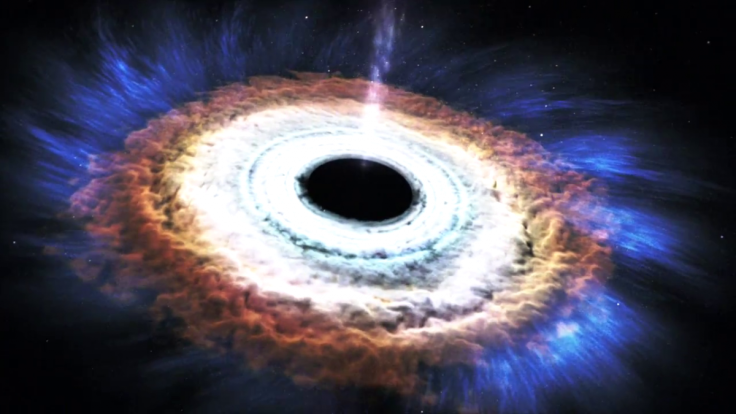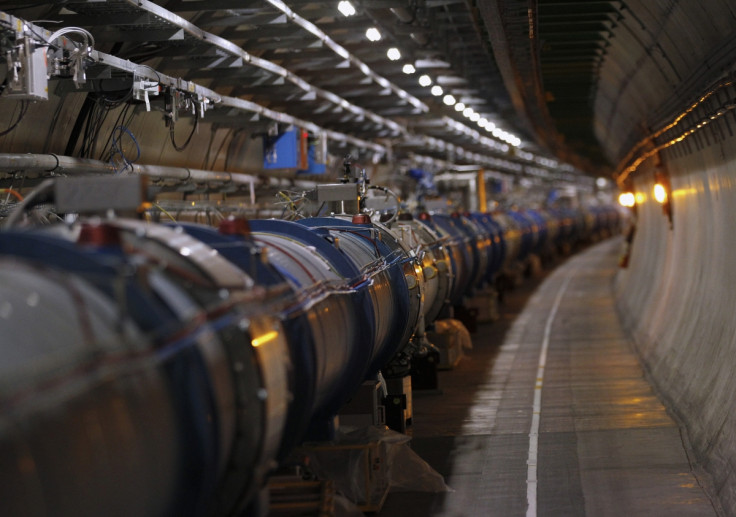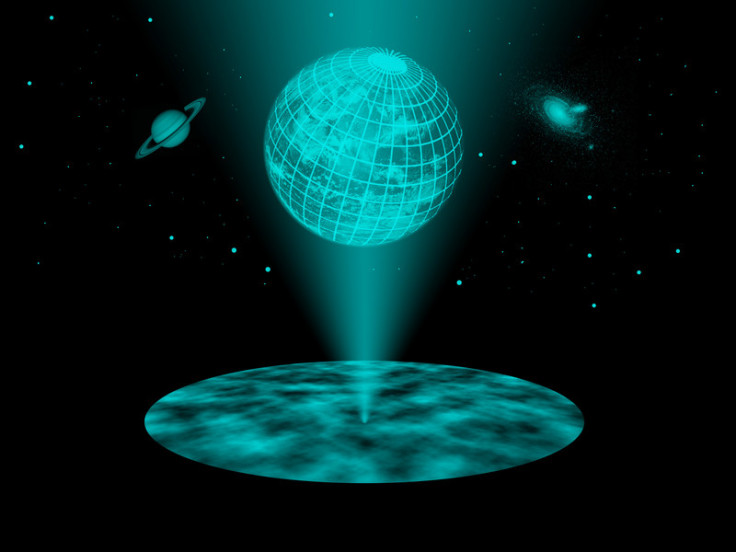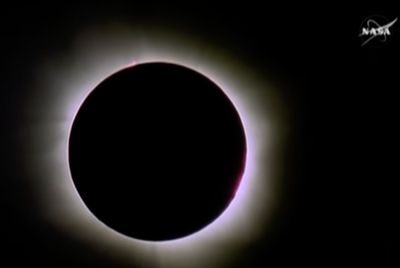Holograms, wormholes & parallel worlds: Best theories about the universe in 2015
What is the universe? Is it a massive wormhole? Are we living in just one of many universes? Is everything actually just a 2D hologram? No one really knows, but scientists are trying to work it out anyway.
Stephen Hawking: Black holes could be passages to other universes

In August, Stephen Hawking said black holes could be one-way passages to other universes. The physicist was talking about the information paradox when he made these comments at a conference at the KTH Royal Institute of Technology. He said objects falling into black holes are not necessarily lost – but could end up in another universe.
"The existence of alternative histories with black holes, suggests this might be possible," he said. "The hole would need to be large and, if it was rotating, it might have a passage to another universe. But you couldn't come back to our universe. So, although I'm keen on space flight, I'm not going to try that. The message of this lecture is that black holes ain't as black as they are painted. They are not the eternal prisons they were once thought. Things can get out of a black hole, both to the outside, and possibly, to another universe."
LHC could prove existence of parallel universes

In March, physicists said the Large Hadron Collider at Cern could be used to prove the existence of parallel universes. Mir Faizal, one of the authors of the study published in Physics Letters B, told Phys.org the detection of mini black holes at a certain energy level could provide such information.
"Normally, when people think of the multiverse, they think of the many-worlds interpretation of quantum mechanics, where every possibility is actualised" he said. "This cannot be tested and so it is philosophy and not science. This is not what we mean by parallel universes. What we mean is real universes in extra dimensions.
"As gravity can flow out of our universe into the extra dimensions, such a model can be tested by the detection of mini black holes at the LHC. We have calculated the energy at which we expect to detect these mini black holes in gravity's rainbow [a new theory]. If we do detect mini black holes at this energy, then we will know that both gravity's rainbow and extra dimensions are correct."
We might have bumped into another universe

Caltech cosmologist Ranga-Ram Chary made headlines in October after publishing a paper that said we may have bumped into another universe. While only tentatively making this suggestion, he said he had found a mysterious glow while mapping cosmic microwave background (the light left over from the early universe). In his study, he removed everything from the CMB, such as stars, gas and dust, and while he should have found nothing except noise, he found patches of the sky were 4,500 times brighter than they should have been. He also said they appear to come from just a few hundred thousand years after the Big Bang.
Chary said there was around a 30% chance the fluctuations were nothing out of the ordinary, but added: "It could also possibly be due to the collision of our Universe with an alternate universe whose baryon to photon ratio is a factor of around 65 larger than ours."
Testing the holographic principle

Evidence for the holographic principle is still lacking, although scientists are edging closer to finding ways of testing it (read more from the TU Wien in Vienna here). The idea states we could be living in a 2D hologram – with the universe just appearing 3D to us. Like an image on TV, each 'pixel' could only contain a finite amount of information. When this is applied to the universe, if you zoom in far enough, there would be a limit to the amount of information space-time can contain.
Scientists working on the Fermilab experiment recently announced they had found no evidence of a hologram universe. Their experiment – using the Holometer – looked for tiny fluctuations that would indicate a change to the beam of light they were studying. A fluctuation would indicate a quantum jitter – suggesting a hologram universe. Craig Hogan, one of the scientists involved, said this does not prove the holographic principle does not work. "This is just the beginning of the story," he said.
The Milky Way is just a massive wormhole

In January scientists from the e International School for Advanced Studies (SISSA) of Trieste, said the Milky Way could be a huge galactic transport system – or a wormhole. The team combined equations of general relativity with a map of the distribution of dark matter in the Milky Way. Supposing wormholes exist, they said the findings suggest our galaxy could contain a space-time tunnel "and that the tunnel could even be the size of the galaxy itself", study author Paolo Salucci said.
"We could even travel through this tunnel, since, based on our calculations, it could be navigable. Just like the one we've all seen in the recent film Interstellar. Obviously we're not claiming that our galaxy is definitely a wormhole, but simply that, according to theoretical models, this hypothesis is a possibility. In principle, we could test it by comparing two galaxies – our galaxy and another, very close one like, for example, the Magellanic Cloud, but we are still very far from any actual possibility of making such a comparison."
© Copyright IBTimes 2025. All rights reserved.






















